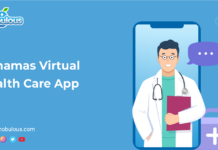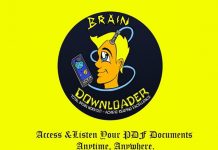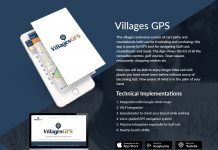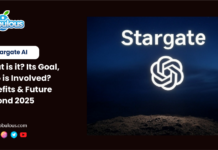How to Create a Medicine Delivery App Like 1mg in 2024?
Medicine delivery app development is on the upsurge and in the highest demand in today’s world driven by the convenience of online shopping and the requirement for on-time medical supplies.
One of the leading platforms in this space is 1mg which provides an extensive variety of medicinal services to numerous people out there. This includes medicine delivery, online doctor consultations, and lab tests.
However, the idea of online retail medicine has taken the speed and has crossed USD 28 billion. If you are peeking for a medicine delivery mobile app development, then we have come up with a step-by-step guide that will help you steer the app development properly.
What is 1mg?
1mg is an advanced online pharmacy, medicine delivery app, and one of the best healthcare apps that provides a wide range of clinical products and services.
The medicine delivery app development allows customers to order medicines, and prescription drugs, book lab exams, visit medical doctors online, and get admission to fitness-related tools and content.
The instant medicine delivery app presents information on diverse medicines such as their uses, dosage instructions, impacts, and side effects. In addendum to this, 1mg features health reports, articles, and information in order to enlighten users on diverse medical necessities and remedies.
With its user-centric interface and suitable medicine delivery possibilities, the 1mg application persists in delivering a seamless and hassle-free healthcare venture for clients all around India.
6 Easy Steps for Medicine Delivery App Development Like 1mg
When it comes to medicine delivery app development like 1mg, it involves 6 easy steps. Each step is crucial to ensure the best and most successful project. Here is the detailed guide broken down into 6 essential steps listed below.
- Requirement Gathering and Analysis
- Hiring the Right Developers
- Architecture and Design
- Development and Integration
- Testing and Quality Assurance
- Deployment and Maintenance
Step 1: Requirement Gathering and Analysis
The first step in medicine delivery app development like 1mg is an exhaustive prerequisite gathering and research. This step incorporates recognizing and contending with various stakeholders, including possible users, healthcare professionals, pharmacies, and regulatory bodies in order to comprehend their individual needs and expectations.
You ought to write a thorough list of essential components like user registration, search and filter prospects, order tracking, medicine details, push notifications, payment gateways, and customer support, helping enterprises in the healthcare industry conquer the mobile app market efficiently.
It is also essential to research healthcare regulations and adherence necessities like HIPAA in the US and GDPR in Europe in order to ensure that your medicine delivery app clings to legal norms.
Further, make sure to perform a detailed market analysis of competitors such as 1mg, PharmEasy, and Netmeds. Doing this will enable you to shape the distinctive value proposition of your app. Lastly, explain the technical requirements, including the technology stack, platform (iOS, Android), scalability necessities, and third-party integrations.
Step 2: Hiring the Right App Developers
Once all your essentials are clear, the next step comes into play, i.e., hiring a professional and experienced medicine delivery app developer team. Now, you need to determine whether you need to hire an in-house team or outsource to a healthcare app development company.
You must consider this on the basis of various factors such as level of control, budget, complexity of your app, and required expertise. Your medicine delivery app development team should possess key roles like project manager, UI/UX designers, front-end and back-end developers, quality assurance testers, and a DevOps engineer.
It is exceptionally paramount to seek developers with experience in healthcare app development who are acquainted with the required technologies, frameworks, and compliance requirements. An experienced team will be essential for guiding the exquisiteness of creating a healthcare application.
Step 3: Architecture and Design
Preparing the technical architecture and designing the UI/UX is another stage for medicine delivery app development. You must start with designing a powerful architecture. As per the sophistication of your healthcare app, you can opt for a microservices architecture or a monolithic procedure.
For front-end development, you must contemplate leveraging React Native or Flutter for cross-platform app development, whereas Node.js or Django are the most appropriate options for back-end development because of their implementation and scalability.
Select a dedicated database such as PostgreSQL or MongoDB in order to control and manage extensive sets of data effectively. Cloud services like Azure, AWS, or Google Cloud are able to provide steadfast hosting and storage solutions.
Eventually, concentrate on UI/UX design in order to build wireframes and prototypes that highlight usability, accessibility, consistency, and aesthetic allure. A user-centric and visually exquisite interface will enhance user retention, satisfaction, and engagement swiftness.
Step 4: Development and Integration
The actual medicine delivery app development takes place in this step by following the AGILE methodology. Agile methodology is beneficial as it enables iterative development, consistent improvements, and regular feedback.
During front-end development, you need to guarantee that the UI/UX designs are implemented faultlessly. Nevertheless, back-end development involves creating the server-side logic, incorporating APIs, and handling databases.
It is essential to integrate third-party services such as payment gateways (Stripe, PayPal), GPS for order tracking, and e-prescription validation.
Make sure to execute robust security measures such as secure authentication and data encryption in order to protect user data and ensure compliance with regulatory measures. Hire developers who can help you with top-notch medicine delivery app development that drives the best results.
Step 5: Testing and Quality Assurance
Testing and quality assurance are important in order to ensure that your medicine delivery app is free from bugs and meets all requirements and needs before launching it on the App Stores (Apple App Store/Google Play Store).
This step includes several types of testing such as:
- Unit Testing: Test individual features, elements, and components for correct functionality.
- Integration Testing: Provide numerous modules that work jointly seamlessly and hassle-free.
- System Testing: Validate the general system’s features, functionality, and implementation.
- User Acceptance Testing: Perform stringent testing with real users in order to gather feedback and make necessary adjustments.
- Performance Testing: Review the app’s performance under diverse requirements in order to confirm that it can control and operate high loads.
- Security Testing: Conduct stringent security assessments in order to identify and resolve susceptibilities and issues.
- Comprehensive Testing: Ensures a reliable and user-centric application.
Step 6: Deployment and Maintenance
The final step involves launching the medicine delivery app on the app store and ensuring its persistent operation and enhancement. You must begin with a beta testing stage in order to gather early user feedback and make the essential adjustments.
Once the app is distilled, you can launch the app on the App Stores (Apple App Store/Google Play Store). A strategic objective for deploying the app is essential for enticing users and creating initial momentum. This includes PR activities and marketing.
After deploying the app on the App Stores, you ought to deliver ongoing support and supervision to the app. Make sure to observe the implementation and user feedback of the application persistently in order to determine areas for progress.
Revamp the mobile app to fix bugs, enhance performance, and add the most delinquent features. Demonstrate a robust customer support system in order to manage user questions and problems quickly. This ensures a positive user experience.
Make Your Medicine Delivery Service Accessible to Users with App Store Optimization!
Right Technology Stack for Medicine Delivery App Development Like 1mg
Selecting the right technology stack is important for a strong, secure, and scalable medicine delivery app development like 1mg. Therefore, we have come up with an overview of the suggested technology stack for multiple segments of the app.
1. Frontend Development
Objective:
- To build a user-centric and responsive interface.
Frameworks:
- React Native: React Native is excellent for cross-platform mobile app development that enables you to develop apps for Android and iOS platforms with a single codebase.
- Flutter: Flutter is another one of the best options for cross-platform development that is known for its high performance and visionary UI elements.
Benefits:
- Both React Native and Flutter provide the best and most robust medicine delivery app development cycles, maintainability, and a native-like user experience.
2. Backend Development
Objective:
- Handle server-side logic, API integrations, and database operations seamlessly.
Languages and Frameworks:
- Node.js: Node.js is popular for its event-driven and non-blocking architecture that makes it effective for managing different connections simultaneously.
- Django: Django is used for Python and is considered a high-level framework because of its robustness and scalability, with built-in features for admin interfaces and security.
Benefits:
- Node.js provides top performance and is perfectly suited for real-time apps whereas Django offers a scalable and secure environment with quick medicine delivery app development potential.
3. Database Management
Objective:
- Store and handle user data, transactional records, and product information.
Databases:
- MongoDB: A NoSQL database provides flexibility in managing large volumes of unstructured data.
- PostgreSQL: PostgreSQL is a robust, open-source relational database system that is known for its advanced features and reliability.
Benefits:
- MongoDB is perfect for medicine delivery applications requiring flexibility and scalability whereas PostgreSQL is excellent for intricate transactions and complicated queries with robust ACID compliance.
Also Read:- Top 15 Best Databases for Web Applications to Use in 2024!
4. Cloud Services
Objective:
- Offer reliable hosting, storage, and scalability.
Providers:
- Amazon Web Services (AWS): AWS provides a variety of services such as storage options, computing power, and content delivery.
- Google Cloud Platform (GCP): GCP offers strong cloud services such as big data capabilities and machine learning.
- Microsoft Azure: Microsoft Azure is known for its seamless integration and enterprise solutions with Microsoft products.
Benefits:
- These cloud providers deliver high availability, scalability, and security which is essential for managing the growing demands of a medicine delivery app like 1mg.
For Any Query:- Seek help from a Cloud Hosting Company!
5. Payment Gateway Integration
Objective:
- Fosters smooth and secure financial transactions.
Services:
- Stripe: Stripe is generally known for its seamless integration and an extensive API.
- PayPal: PayPal is globally recognized and trusted by the users.
- Razorpay: Razorpay is extensively popular in India and offers comprehensive payment options to numerous users.
Benefits:
- These payment gateways provide safe, secure, reliable transaction processing, ensure compliance with financial regulations, and support different payment methods.
6. Push Notifications
Objective:
- Engage and inform with on-time updates.
Services:
- Firebase Cloud Messaging (FCM): FC is free and seamless to integrate for sending push notifications across different platforms.
- OneSignal: It provides the latest segmentation and delivery options for push notifications.
Benefits:
- These services provide scalable and reliable solutions for delivering push notifications in order to improve user engagement.
7. Analytics
Objective:
- Track app performance and user behavior.
Tools:
- Google Analytics: Google Analytics provides extensive insights into user interactions and app usage.
- Mixpanel: Mixpanel concentrates on user retention and engagement analytics.
Benefits:
- These tools assist in order to comprehend user behavior, optimizing features, and making data-driven decisions in order to enhance the mobile app.
8. Security
Objective:
- Safeguard user data and ensure compliance with regulations.
Practices:
- Data Encryption: It encrypts sensitive data both in transit and at rest.
- Secure Authentication: Enforce OAuth 2.0 and multi-factor authentication (MFA).
- Regular Security Audits: Regular security audits conduct quick security assessments in order to identify and resolve any bugs or susceptibilities.
Benefits:
- Security within medicine delivery app development like 1mg safeguards user data, builds trust, and complies with regulatory standards, including GDPR and HIPAA.
Must-Have Features for Medicine Delivery App Development Like 1mg
Medicine delivery app development like 1mg incorporates an expansive set of components in order to provide a seamless and persuasive user experience. Here is a checklist of must-have features for medicine delivery app development like 1mg.
1. User Registration and Profiles
User registration and profiles facilitate users to create and supervise their profiles on the app. Users will be able to sign up via their email, phone number, or social media accounts. Profiles can store personal information, prescription details, and medical history that provides a personalized experience.
2. Search and Filter Options
This feature allows seamless searching of medicines, health products, and services. It implements a strong search function with brands, and filters for categories, conditions, and price ranges. This assists users in quickly finding the products they have been searching for and require urgently.
3. Medicine Details
Medicine details provide extensive details and information on each product. This includes a comprehensive description, side effects, uses, precautions, and dosage instructions. This allows users to get well-informed about the medicines they are buying.
4. E-Prescriptions
E-prescriptions enable users to upload prescriptions on the app. It allows users to upload a photo or digital copy of their prescriptions that can be validated by pharmacists before dispensing medicines. This is essential for regulatory compliance.
5. Order Tracking
Order tracking offers real-time tracking of orders and users will be able to track and manage the status of their orders from placement to delivery. Notifications and updates through push notifications, emails, or SMS improve the tracking experience.
6. Payment Gateway Integration
Payment Gateway Integration is a component that sustains various payment methods and comprises numerous payment alternatives such as net banking, credit/debit cards, cash on delivery (COD), and e-wallets in order to deliver users secure and convenient payment options.
7. Push Notifications
Push Notifications keep users informed with on-time alerts and send notifications for order confirmations, delivery status, shipping updates, health tips, and special offers. This assists users in maintaining user retention, engagement, and satisfaction.
8. Ratings and Reviews
This feature enables users to review products and services. Enforce a system for users to rate and review medicines and services. This feedback assists users in enhancing service quality and helps others make informed decisions.
9. Customer Support
This feature provides excellent customer support and offers numerous support channels, including in-app chat, phone support, and email in order to help users with their issues and queries. A responsive support system improves user reliability and trust.
10. Health Information and Articles
Health information and articles offer valuable health-related content and include a section with tips, articles, and information on multiple health topics. This educates users and ranks the application as a reliable health resource.
11. Lab Test Booking
Lab Test Booking is a top-notch feature that allows the booking of lab tests and enables users to book diagnostic tests and view results within the medicine delivery app. It helps you become a partner with certified labs in order to provide a wide array of tests and ensure accurate reporting.
12. Online Doctor Consultations
Online doctor consultations are another feature that fosters virtual doctor consultations and provides an alternative for users to consult with doctors online via voice, chat, or video calls. This adds a beneficial dimension to the healthcare services the mobile app provides.
13. Prescription Reminders
This segment reminds users to take their medications on time. Execute a reminder system that informs users to take their pills at the specified time, enriching commitment to therapy programs.
Cost for Medicine Delivery App Development Like 1mg
The cost of medicine delivery app development like 1mg will cost you around USD 30,000 to USD 300,000 based on multiple factors. These include the complexity of features, technology stack, design, and the location of the medicine delivery app development team.
However, the crucial expenses of app development costs cover frontend and backend medicine delivery app development, UI/UX design, QA testing, and post-launch maintenance. In addition to this, ongoing costs for security measures, server hosting, and regular updates need to be considered.
A more complex app with advanced features such as online consultations and lab test bookings propels the cost towards the higher end of the spectrum and pushes it away from the horizon.
Also Read:- Cost To Develop A Healthcare Mobile App!
Medicine Delivery App Development Like 1mg Market Statistics
If you think numbers, stats, and graphs help you make a better understanding of the market, then here is an overview of the market statistics for medicine delivery app development like 1mg:
- The global market for e-pharmacy app development is envisioned to reach a whopping USD 107.53 Billion by 2025. It recommends a substantially increased potential for medicine delivery contribution.
- 1mg has introduced a 158% boom in its sales in FY20. This indicates its sturdy presence within the Indian medicine delivery app development market.
- The online pharmacy market in India is predicted to reach a value of USD 5.7 Billion by 2027.
- In addition to this, 1mg has overtaken PharmEasy in the market percentage, seizing 31% in September 2023 when compared to PharEasy’s 15%.
- The typical online pharmacy section in India is envisioned to have a customer penetration of 21.65% in 2023, growing to 29.04% by 2027.
- Revenue inside the Online Pharmacy section is predicted to gain USD 316.4 Billion in 2023, with an expected growth rate of 13.4% by 2027.
- The acute therapy phase in online medicine delivery apps is envisioned to see promising growth, with a market share growth from 36.58% in 2020 to 46.08% in 2026.
Final Thoughts
A medicine delivery app development like 1mg implicates detailed planning, fundamental components, and a suitable technology stack in order to guarantee a seamless and hassle-free user experience.
By learning market needs, focusing on user-friendly design and security, and seeking help from professional app developers, you are able to build a successful and reliable healthcare platform.
With consistent updates and strong customer support, your mobile app can thrive in the competitive health tech market. If you need additional guidance and help, then make sure to contact the best medicine delivery app development company.
FAQs — Medicine Delivery App Development Like 1mg
Q. Can medicine be delivered online?
Ans. You can order medicines and receive them right at your doorstep seamlessly from the medicine delivery app. Download the app on your phone and order your medicines on the go.
Q. How much does it cost to build a medicine delivery app?
Ans. The cost of medicine delivery app development ranges from USD 30,000 to USD 300,000 based on multiple factors, including the complexity of features, technology stack, design, and the location of the medicine delivery app development team.
Q. How do I create a medicine delivery app?
Ans. For medicine delivery app development, you need to follow the below steps carefully:
- Requirement gathering and analysis.
- Hiring the right app developers.
- Architecture and UI/UX design.
- Medicine delivery app development and integration.
- Testing and Quality Assurance.
- App deployment and maintenance.
Q. Is medicine distributorship profitable?
Ans. Yes, medicine distributorship is profitable as medicine wholesales are able to make around 8% to 12% profit via the wholesaling of branded medicines and drugs. Additionally, 10% to 20% of profit is via generic medicines and drugs.

































